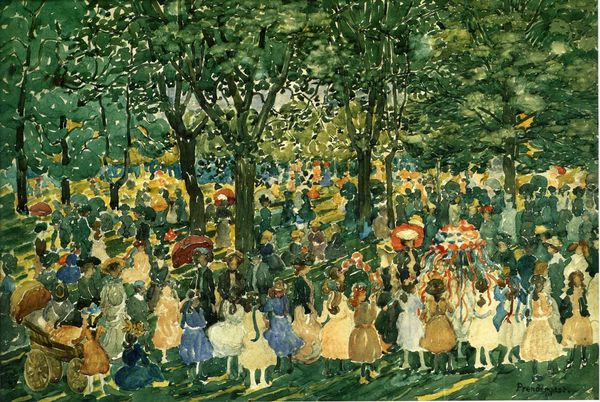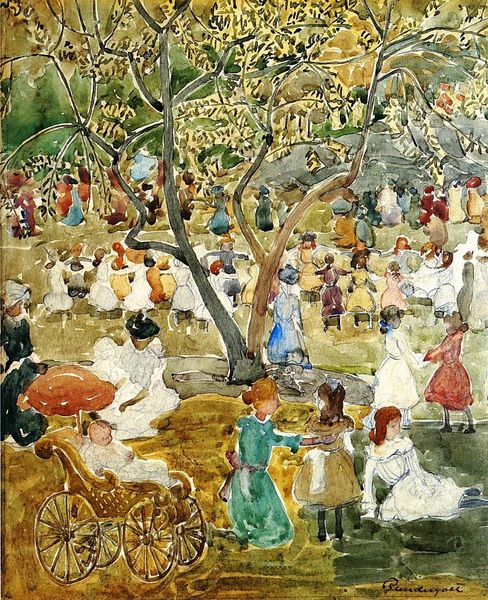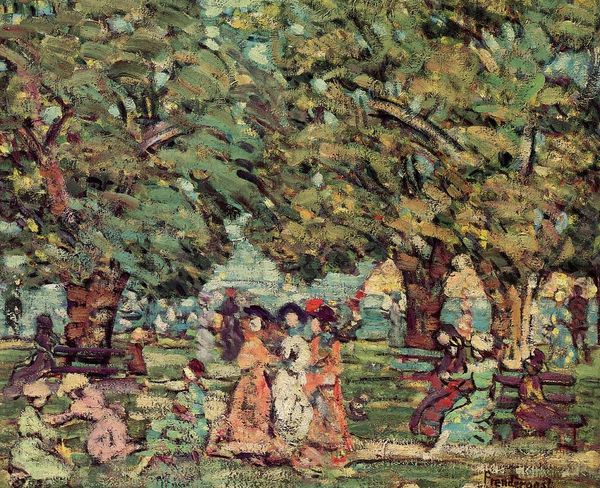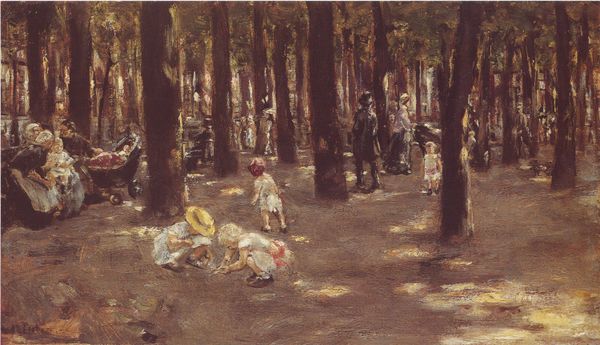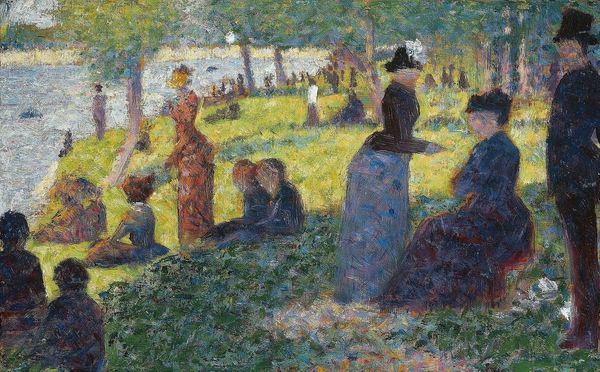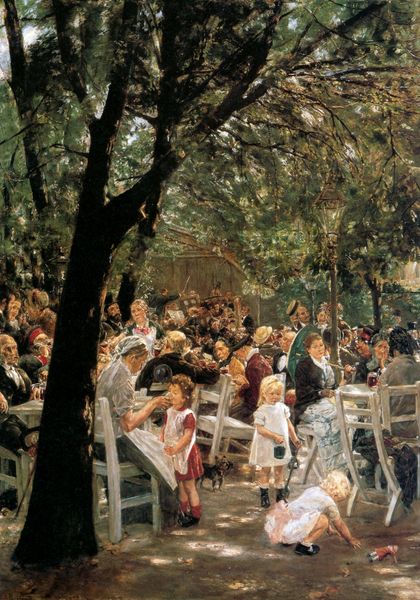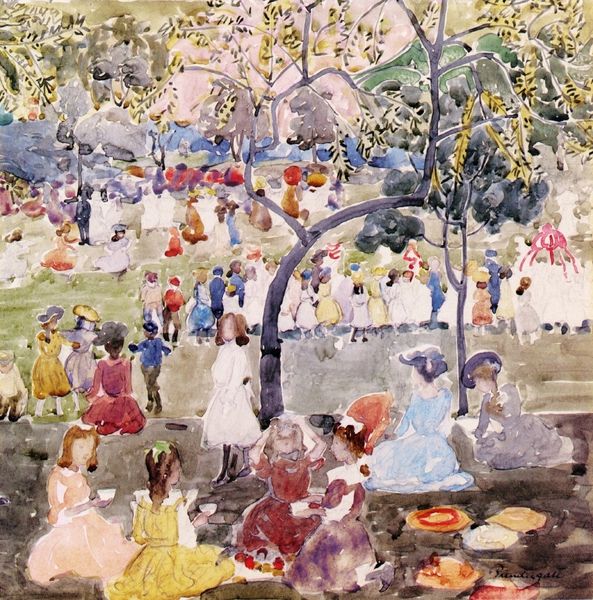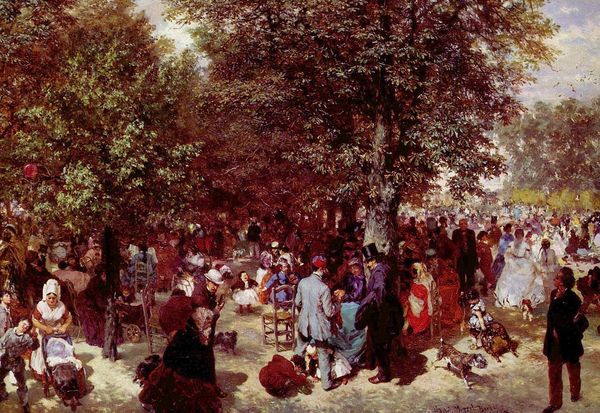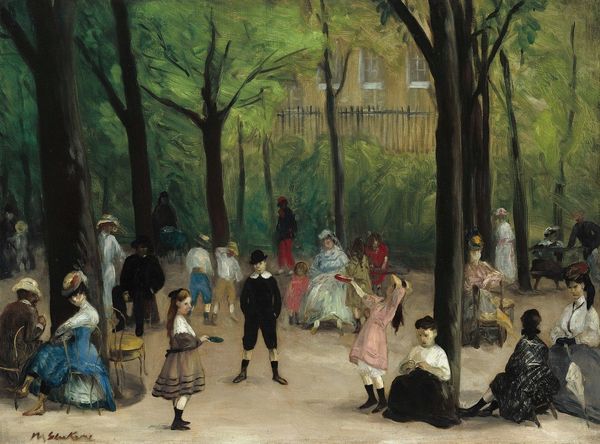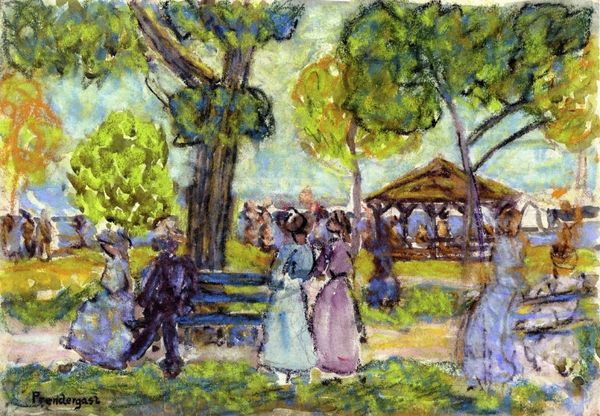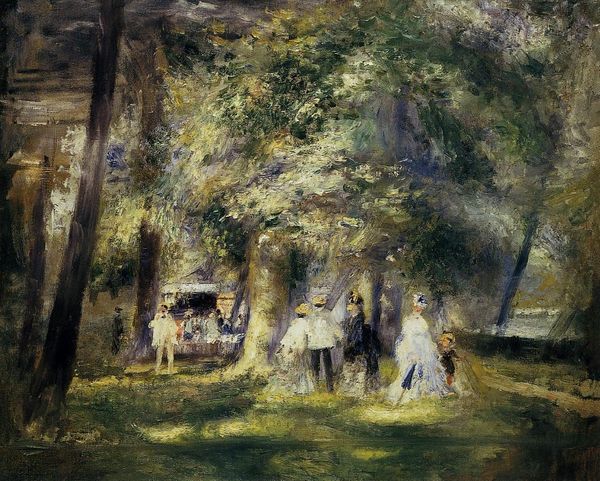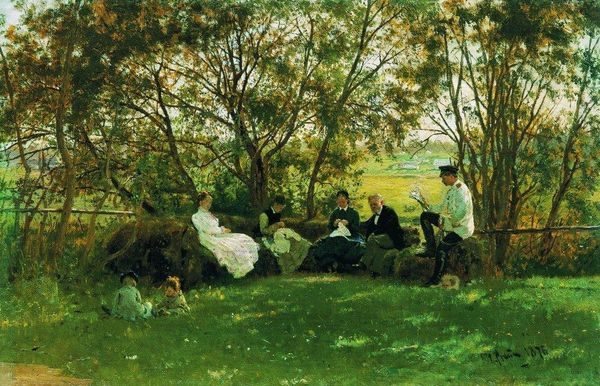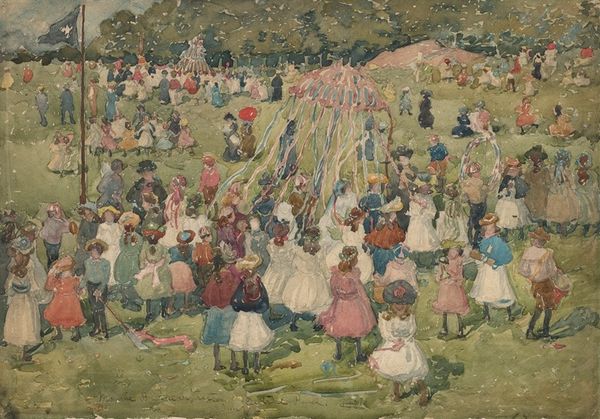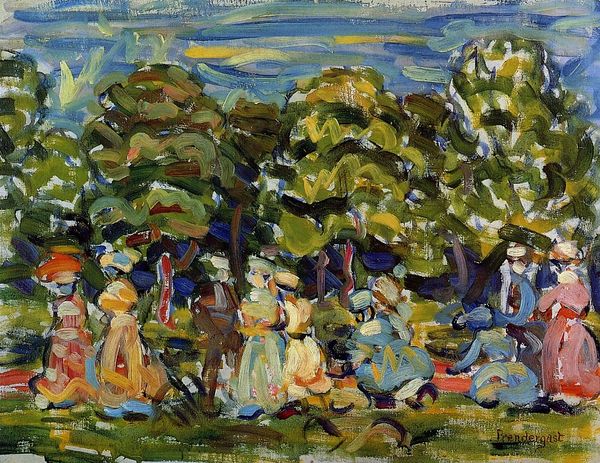
Copyright: Public domain
Curator: Here we have William Glackens' "May Day in Central Park" from 1905. Editor: My first impression is that it’s a bustling scene, chaotic almost, but infused with a sense of springtime joy and recreation. There's an undeniable visual rhythm. Curator: Absolutely. Glackens, associated with the Ashcan School, often depicted everyday life, particularly that of the urban working class. But here, we see something more idyllic. It reflects the Progressive Era's efforts to create public spaces for all, a democratic ideal made manifest. Editor: The composition certainly reinforces that. Look at the way the figures are arranged: the eye isn't drawn to one central point but roams freely, echoing the open nature of the park itself. The loose brushstrokes further contribute to this sense of boundless energy. It is quite painterly in the purest sense. Curator: Indeed, that Impressionistic technique softens the social divisions that would have undeniably existed at that time, and suggests Central Park could be an equalizing space. Notice the various shades and ethnicities all together in one painting. What is your take? Editor: An intriguing interpretation. From a purely formal perspective, the dappled light filtering through the trees unifies the scene, creating a harmonious, almost dreamlike atmosphere. Glackens seems to focus more on color relationships than precise representation, like a visual poem. Curator: Perhaps the choice to paint this in a deliberately ambiguous style offers him a way of sidestepping the political and racial complexities of that time in history, rather aiming to illustrate hope of something better? Editor: It could be. To step away for a moment and consider the broader visual design; note how the large expanse of green lawn meets and contrasts against the flurry of active children who seem to rise up into the depths of the shaded thicket that is formed above. Curator: It presents a complicated view of society, then. More critical analysis is welcome, especially with an artwork such as this. Editor: A visual moment captured at an extraordinary time.
Comments
No comments
Be the first to comment and join the conversation on the ultimate creative platform.
